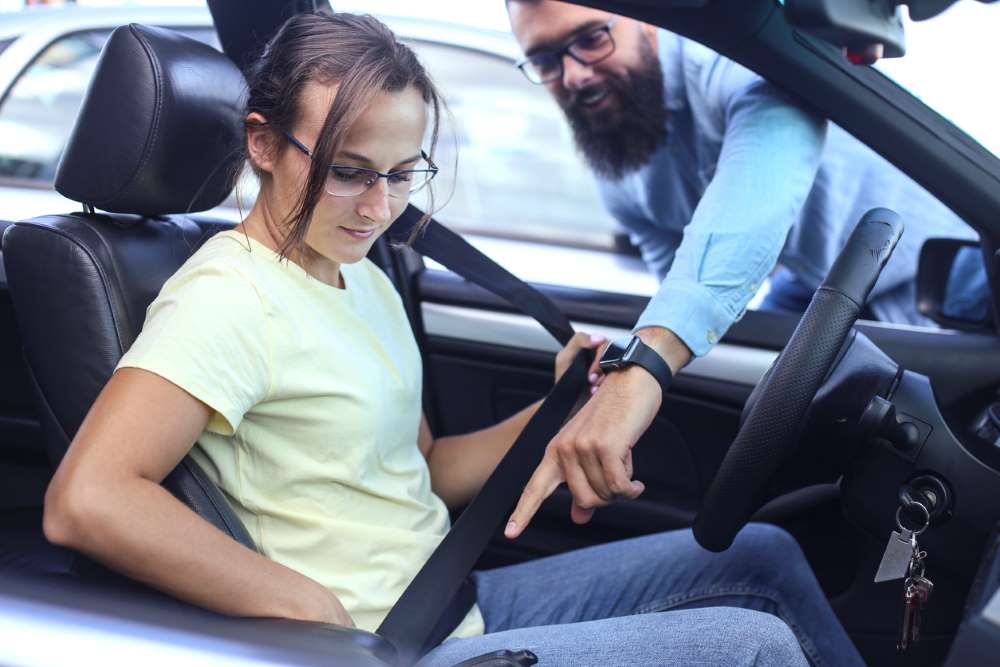
A car is a wonderful tool and a dangerous piece of equipment. The danger is increasingly evident when you have child passengers or teens at the wheel. So what can you do to help keep the kids and teens in your life safe in motor vehicles? You have plenty of options for protecting your children, and many of these options have to do with proper education and good habits.
Safety Concerns When Kids and Teens Are in the Car
When it comes to car accidents involving children and teens, the numbers are far too high. Teen drivers crash four times as much as older drivers, with the worst age for car crashes being 16. Also, the Centers for Disease Control (CDC) report that 91,000 children aged 12 and younger suffered injuries from car crashes in 2019. These statistics should encourage you to immediately speak to the children in your life about motor vehicle safety. A good starting point is letting younger drivers and passengers know how likely and painful car crashes can be when they don’t practice good habits.
Safety Tip #1: Properly Restrain Young Children and Remind Teens to Buckle Up
Safety belts and safety seats can do a lot. According to the CDC, car seats reduce a child’s crash injury risk by up to 82%. And seatbelt use reduces the risk for serious and fatal crash injuries by approximately 50% in older children and adults.
It’s important to know and comply with your state’s car seat and safety belt laws for every age group. If your teen is driving a young child, make sure they know and follow the rules as well.
Safety Tip #2: Use the Law to Monitor Your Teen’s Driving in the Early Years
According to Glotzer & Leib, LLP, a teen has the worst risk of getting into a car crash at the age of 16. This means that many teens are most dangerous behind the wheel when they first start driving. You can curb this risk by paying close attention to your state’s Graduated Driver Licensing Laws. Several states have laws that require new drivers to follow certain rules, such as:
-
Having an adult in the car;
-
Limiting the number of passengers in the car; or
-
Refraining from driving after dark.
The highest teen driving risks include speeding and texting while driving. Texting while driving makes a driver 23 times more likely to crash. Speeding accounted for 27% of fatal teen crashes in 2019. If you’re in the car to remind your teen to take their foot off of the gas and put their phone down (you can even take it away), you could save their life.
To enforce good driving habits, you can use your state’s legal requirements as an excuse for keeping a close eye on your teen’s driving. Your early and consistent monitoring of their driving behavior can help them develop good habits that keep them safe as they gain more experience on the road.
Safety Tip #3: Talk Dollars and Cents with Your Teen Driver
Insuring a teen driver is legally necessary and expensive. Also, insurance premiums dramatically increase when teens crash or violate traffic laws. You can explain that if your teen doesn’t drive safely, they could be too expensive to insure and, therefore, too expensive to have driving privileges.
If your teen doesn’t appreciate the financial sacrifice, you can require them to pay all or part of their insurance costs. Some teens quickly learn that they don’t want to risk higher insurance premiums with unsafe driving practices. Your child’s safety is more important than money, but imposing financial obligations can encourage your child to be safe.
Education and Communication Are Key
Giving your children the facts about how and why to be safe can go a long way in protecting them. It’s important to educate yourself about the legal requirements for safe driving in your state and communicate them to your kids and teens. If you need help understanding your legal obligations as the parent of a teen driver, you can speak to an experienced attorney in your state.



























